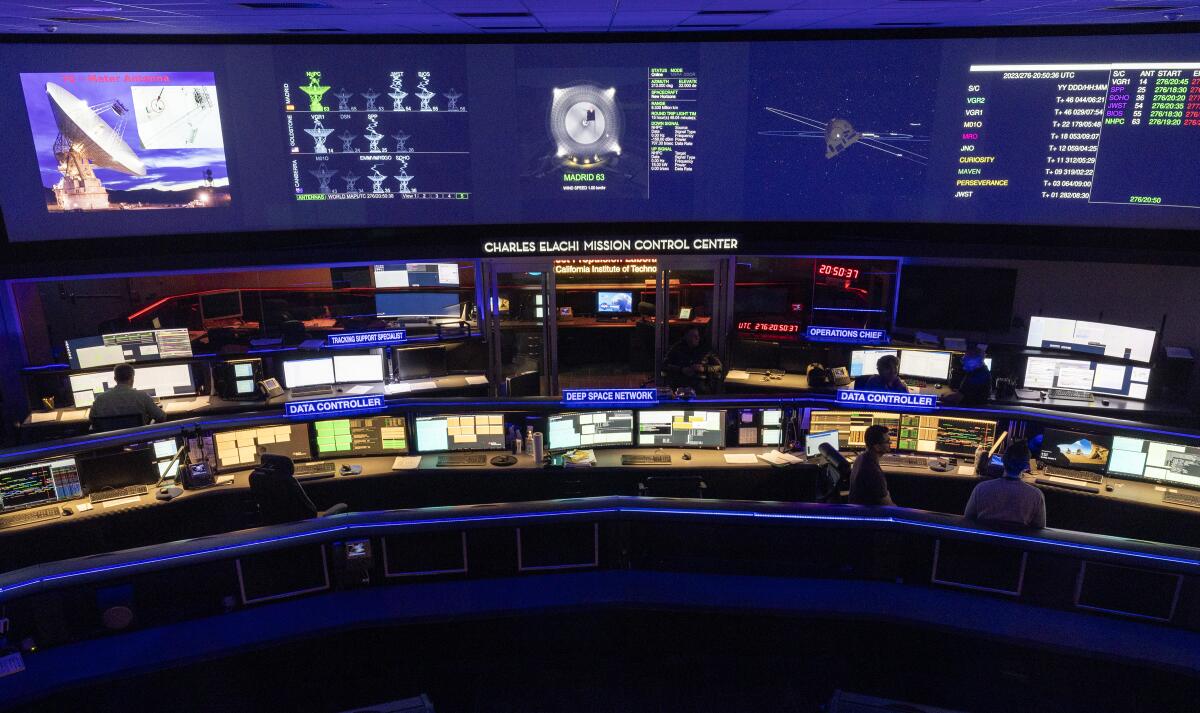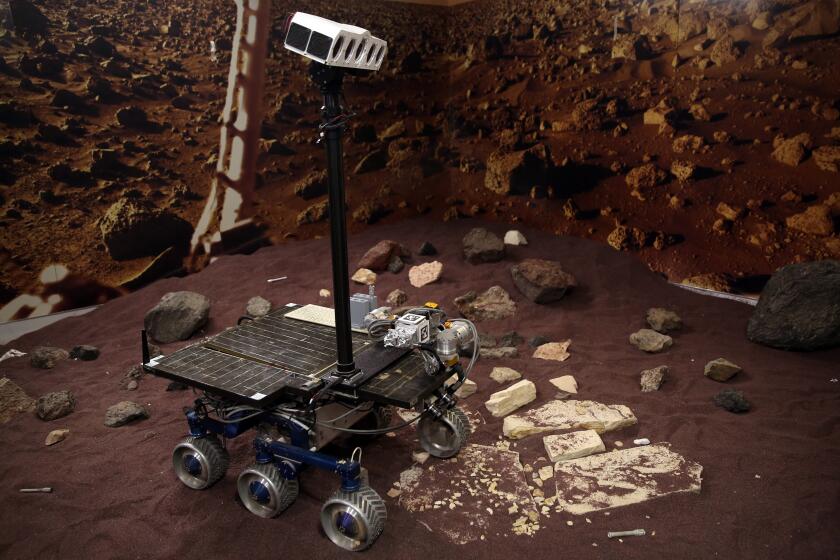Budget cuts to Mars Sample Return mission prompt hundreds of layoffs at JPL

- Share via
NASA’s Jet Propulsion Laboratory laid off hundreds of employees Wednesday in anticipation of massive funding cuts in the federal budget.
Despite pleas to NASA and the White House from California lawmakers hoping to preserve jobs at the La Cañada Flintridge research institution, the lab let go 530 employees — approximately 8% of its workforce — and 40 additional contractors, JPL Director Laurie Leshin said in a memo to staff.
“These cuts are among the most challenging that we have had to make even as we have sought to reduce our spending in recent months,” Leshin wrote. “As much as we wish we didn’t need to take this action, we must now move forward to protect against even deeper cuts later were we to wait.”
This is JPL’s second round of layoffs since the year began. In January, 100 on-site contractors lost their jobs after NASA directed the lab to reduce spending in anticipation of severe budget cuts for the Mars Sample Return mission, an ambitious effort managed by JPL that would bring pieces of the Red Planet back to Earth for study.
The head of NASA’s Jet Propulsion Laboratory warns that jobs at the lab will be in jeopardy if proposed funding cuts for the Mars Sample Return mission go through.
Though Congress has not yet finalized appropriations for next year, NASA has instructed JPL to prepare for a federal budget that could cap Mars Sample Return spending in the 2024 fiscal year at $300 million — 36% of the previous year’s $822-million budget allocation and less than one-third of the $949 million the Biden administration has requested for the program.
“To spend more than that amount, with no final legislation in place, would be unwise and spending money NASA does not have,” NASA Administrator Bill Nelson said in a statement.
Most JPL employees were instructed to work remotely Wednesday “so everyone can be in a safe, comfortable environment on a stressful day,” Leshin wrote.
California lawmakers in recent months have pleaded with NASA to preserve jobs at JPL, which currently employs about 6,000 people full-time.
Earlier this month, a bipartisan group of more than 20 members of California’s congressional delegation sent a letter to the White House Office of Management and Budget protesting NASA’s “deeply misguided decision” to preemptively cut spending before appropriations were finalized.
“Make no mistake: these crushing job cuts are the direct result of the Administration’s premature decision to bypass Congressional spending authority and unilaterally slash vital funding for JPL’s Mars Sample Return mission,” Democratic Sen. Alex Padilla, a signatory to the letter, said in a statement. “These dramatic cuts are devastating for our local workforce and will set California and America’s scientific and space leadership back significantly at this critical moment.”
Late last year, a spacecraft containing samples of a 4.6-billion-year-old asteroid landed safely in the desert after a 1.2-billion mile journey.
Rep. Judy Chu (D-Monterey Park) agreed that the job cuts would harm Southern California workers but expressed hope that they might be reversed. “I’m hopeful in the coming weeks we can work to broker a deal with the Administration and Congress to restore funding to the levels necessary to rehire workers,” she said in a statement.
The Mars Sample Return mission, a joint project with the European Space Agency, has been plagued with delays and cost overruns.
An independent review commissioned by NASA last year determined there was a “near zero probability” that the mission would make its 2028 launch date.
The project is now on hold while NASA analyzes the review board’s findings. The team tasked with that review is scheduled to make its recommendations to NASA in March or April, Associate Administrator for the Science Mission Directorate Nicky Fox said last week during a public meeting of the directorate.









